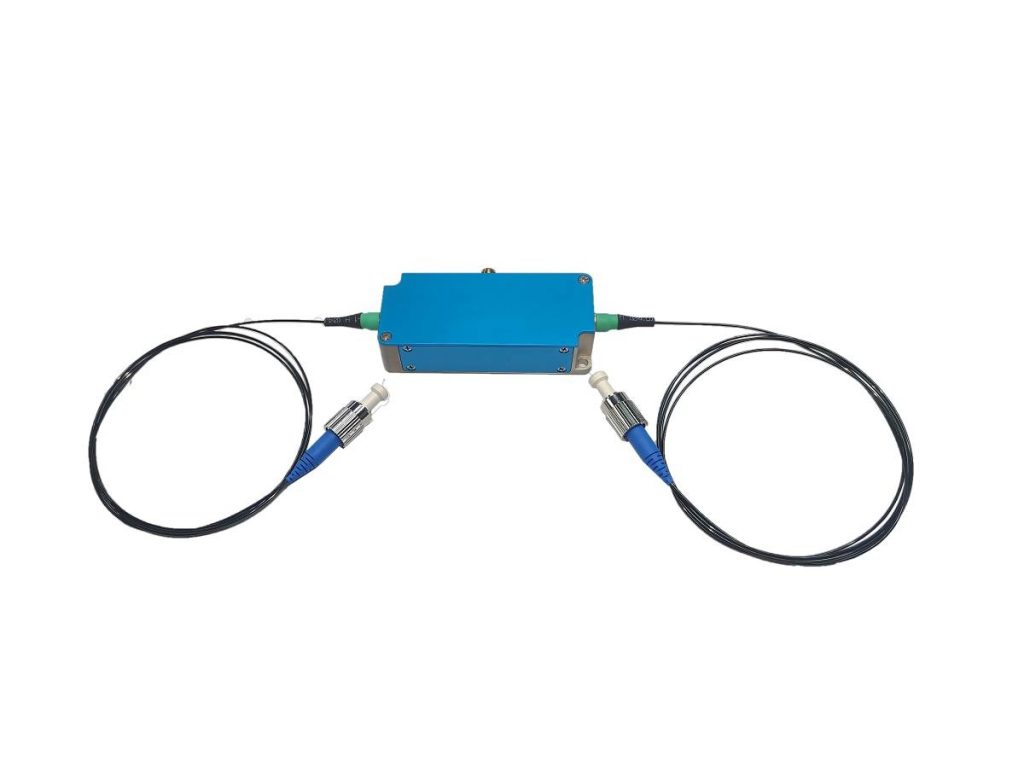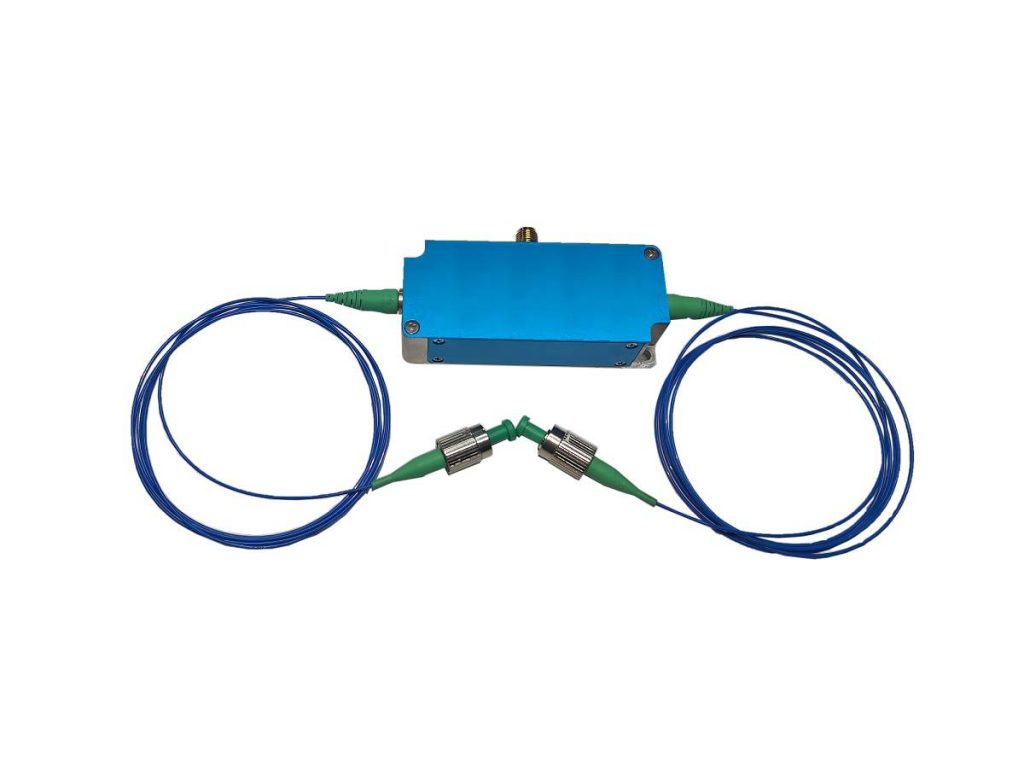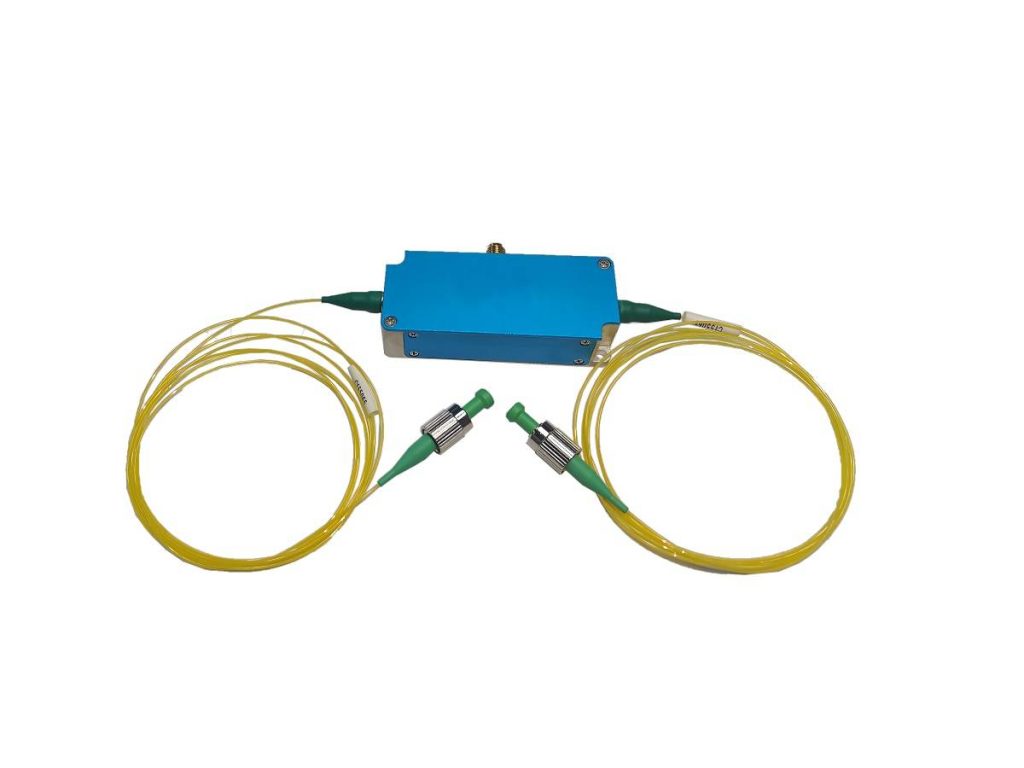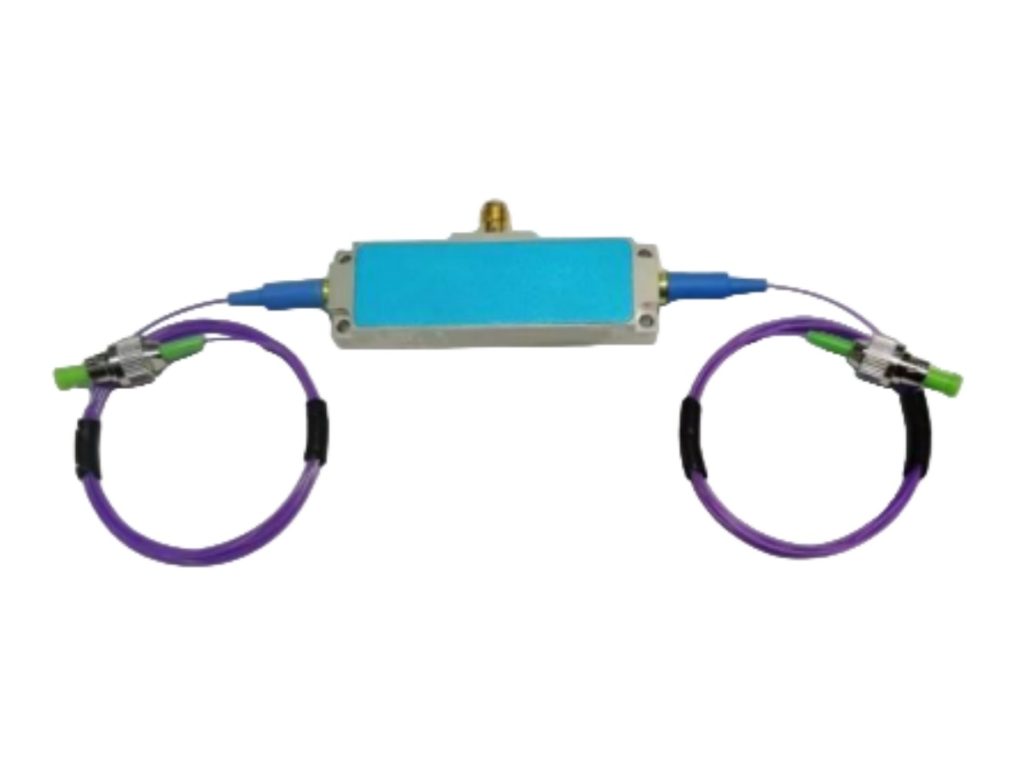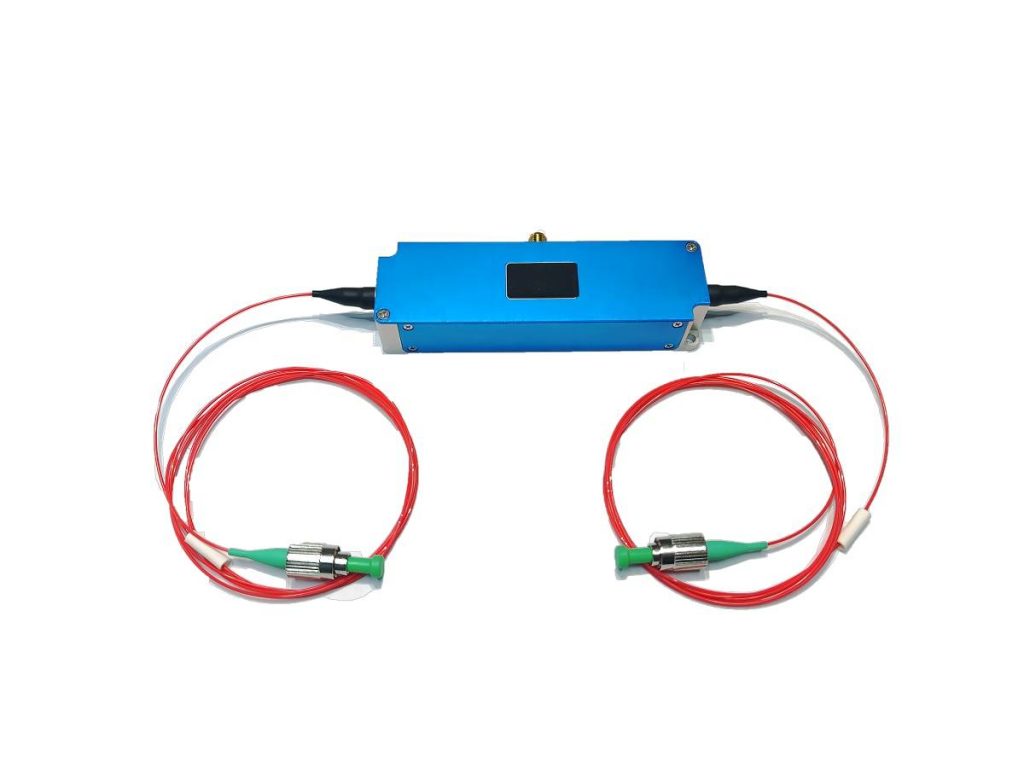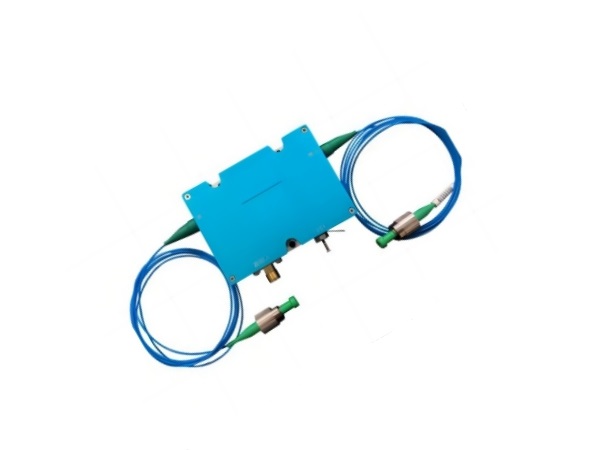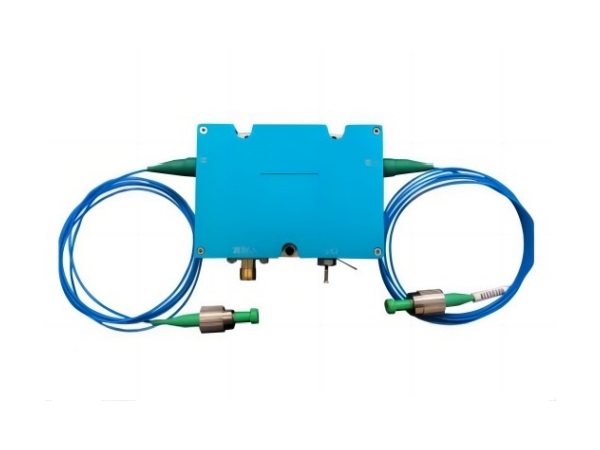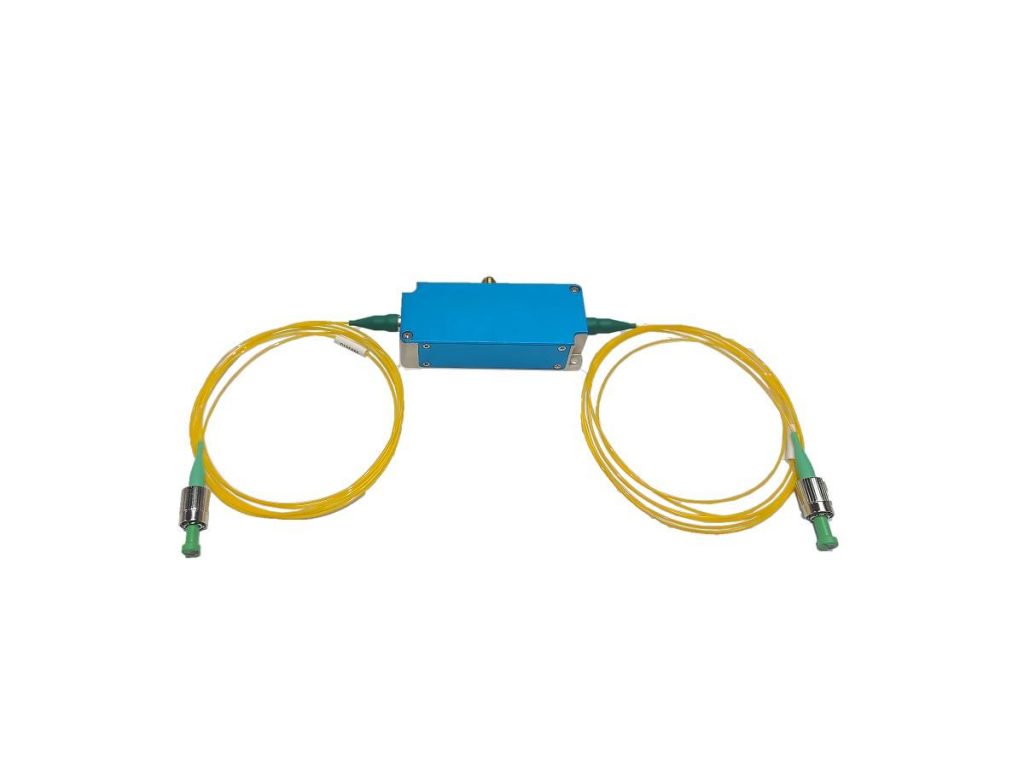Fiber Coupled Acousto Optic Modulators: Specific Applications in Optical Communications
Optical fiber communication has become the backbone of modern information transmission due to its high capacity, low loss, and immunity to electromagnetic interference. A critical component within these systems is the fiber-coupled acousto-optic modulator (AOM), which plays an indispensable role in manipulating and processing optical signals for efficient transmission. This article delves into the workings, advantages, and diverse applications of fiber-coupled AOMs within the realm of optical communication.

The Crucial Role of AOMs in Optical Communication
The ever-growing demand for high-speed data transmission has propelled the development of sophisticated optical communication technologies. Optical fibers, with their exceptional transmission properties, have emerged as the preferred medium for carrying vast amounts of information over long distances. However, manipulating and processing these optical signals for optimal transmission necessitates specialized devices. Fiber-coupled AOMs fulfill this critical role by leveraging the acousto-optic effect to modulate light based on applied sound waves.
Working Principle of Fiber-Coupled AOMs
The acousto-optic effect underpins the operation of AOMs. When sound waves propagate through a specific material (acousto-optic crystal), they induce periodic variations in the material’s refractive index. Light traveling through this crystal experiences diffraction due to these refractive index variations. By carefully controlling the sound wave’s frequency and intensity, the AOM can manipulate the light beam’s diffraction angle and consequently its intensity.
A fiber-coupled AOM typically consists of two main components:
- Acousto-optic Crystal: This crystal, made from a material like tellurium dioxide (TeO2) or silica, exhibits a strong acousto-optic effect. When an electrical signal is applied to a transducer bonded to the crystal, it generates sound waves that propagate through the crystal.
- Optical Fiber: The optical fiber acts as a waveguide for the light signal. It is carefully aligned with the acousto-optic crystal to ensure efficient light-wave interaction with the sound waves.
By controlling the electrical signal driving the transducer, the AOM can modulate the sound wave’s properties, thereby influencing the light beam’s diffraction and ultimately its intensity. When no electrical signal is applied, the light propagates straight through the crystal without significant diffraction. As the electrical signal strength increases, the sound wave intensity rises, causing the light beam to diffract at a larger angle, effectively reducing the intensity of the transmitted light.
Advantages of Fiber-Coupled AOMs
Fiber-coupled AOMs offer several advantages that make them well-suited for various applications in optical communication:
- Broad Bandwidth: AOMs can achieve modulation over a wide range of frequencies, from direct current (DC) to hundreds of gigahertz (GHz). This broad bandwidth makes them suitable for high-speed optical communication systems.
- Low Loss: Compared to traditional electro-optic modulators, AOMs exhibit minimal insertion loss, meaning they introduce minimal attenuation to the light signal during transmission. This is crucial for maintaining signal integrity, especially in long-distance communication.
- High Reliability: AOMs possess a simple design with no moving parts. This translates to high reliability and resistance to environmental disturbances, such as vibrations and temperature fluctuations.
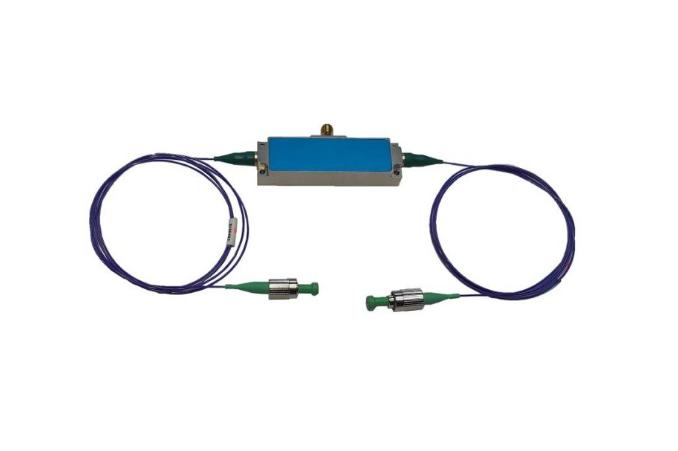
Applications of Fiber-Coupled AOMs in Optical Communications
The unique properties of fiber-coupled AOMs make them invaluable across various aspects of optical communication systems:
1. Long-Distance Optical Communication
- Power Amplification: In long-distance communication, signal strength can deteriorate due to fiber loss. AOMs can be employed to amplify the signal power without affecting its spectral characteristics. By strategically diffracting a portion of the light beam into a higher-order mode within the fiber, AOMs can effectively increase the overall signal power.
- Wavelength Conversion: Wavelength division multiplexing (WDM) is a technique that transmits multiple data streams on a single fiber by using different wavelengths of light. AOMs can be used for wavelength conversion, enabling the efficient merging or separation of different wavelength channels within a WDM system.
2. Optical Networks
- Optical Switching: Optical networks require efficient routing of light signals between different paths. AOMs excel at high-speed optical switching. By precisely controlling the sound wave within the AOM, the light beam can be diffracted towards specific output fibers, directing the signal to the desired destination.
- Optical Cross-Connects (OXCs): In an optical network, OXCs enable dynamic reconfiguration of light signal paths. AOMs play a crucial role within OXCs by facilitating the routing of light signals between different input and output ports. By rapidly switching the diffraction angle of the light beam based on the control signal, AOMs enable flexible and efficient signal routing within the network.
- Optical Routers: Optical routers are intelligent devices that direct light signals based on their destination addresses. AOMs can be integrated into optical routers to achieve high-speed and reliable signal routing decisions. The AOM modulates the light signal based on its destination information, enabling the router to direct it to the appropriate output port.
3. Optical Sensing
Fiber optic sensors utilize light signals to measure various physical parameters like temperature, pressure, and vibration. AOMs provide precise control over the light signal within these sensors. By carefully modulating the light pulse characteristics using the AOM, the sensor can achieve highly accurate measurements.
- Distributed Fiber Temperature Sensing (DTS) Systems: DTS systems employ light pulses to measure temperature variations along the length of an optical fiber. AOMs are used to generate and receive the light pulses backscattered from the fiber. By analyzing the time delay and intensity changes of the backscattered light, the system can precisely determine the temperature distribution along the fiber.
4. Quantum Communication
Quantum communication leverages the principles of quantum mechanics to achieve ultra-secure communication. AOMs play a vital role in this emerging field by manipulating light signals at the quantum level.
- Single-Photon Sources and Quantum State Manipulation: Quantum communication often relies on single photons or specific quantum states of light. AOMs can be used to generate single-photon pulses or manipulate the polarization state of light signals, enabling the creation and control of the necessary quantum states for communication.
- Quantum State Storage and Manipulation: AOMs hold promise for storing and manipulating quantum states of light. By utilizing acousto-optic crystals as quantum memory elements, researchers are exploring the possibility of creating temporary storage for quantum information, a crucial step towards building robust quantum communication networks.
5. Optical Device Testing
The performance and reliability of optical devices are critical for ensuring the smooth operation of communication systems. AOMs serve as valuable tools for testing and calibration of these devices.
- Generation of Well-Defined Test Signals: AOMs can be precisely controlled to generate light signals with specific characteristics, such as a defined wavelength or power level. These well-defined signals serve as ideal test sources for evaluating the performance of optical devices like optical amplifiers, filters, and detectors.
- Simulating Various Signal Conditions: By adjusting the AOM’s operating parameters, engineers can simulate different signal conditions, including varying data rates and pulse shapes. This allows for comprehensive testing of optical devices under various operating scenarios, ensuring their robustness and functionality.
5. Development of Optical Modules and Subsystems
Optical modules and sub-systems are building blocks for high-speed optical communication networks. AOMs play a significant role in the development and testing of these modules.
- Precise Control and Processing of Optical Signals: AOMs enable precise control and processing of light signals within high-speed optical modules. They can be used for modulation, demodulation, and power control of optical signals, ensuring optimal performance within the module.
- Module Testing and Verification: During the development phase of optical modules, AOMs are employed to generate test signals and simulate various operating conditions. This allows for thorough testing of the module’s functionality and performance under different data rates and signal formats.
6. Maintenance and Fault Diagnosis of Optical Communication Systems
Maintaining the health and performance of optical communication systems is crucial for reliable data transmission. AOMs can be utilized for monitoring and troubleshooting potential issues within the system.
- Monitoring System Performance and Status: By strategically positioning AOMs within the system, engineers can monitor the power level and wavelength distribution of the light signal in real time. This allows for early detection of signal anomalies and potential faults that could disrupt communication.
- Fault Localization: When a fault is detected, AOMs can be used to isolate the problem. By analyzing the characteristics of the light signal at different points within the system, engineers can pinpoint the location of the fault, enabling a faster repair and system recovery.
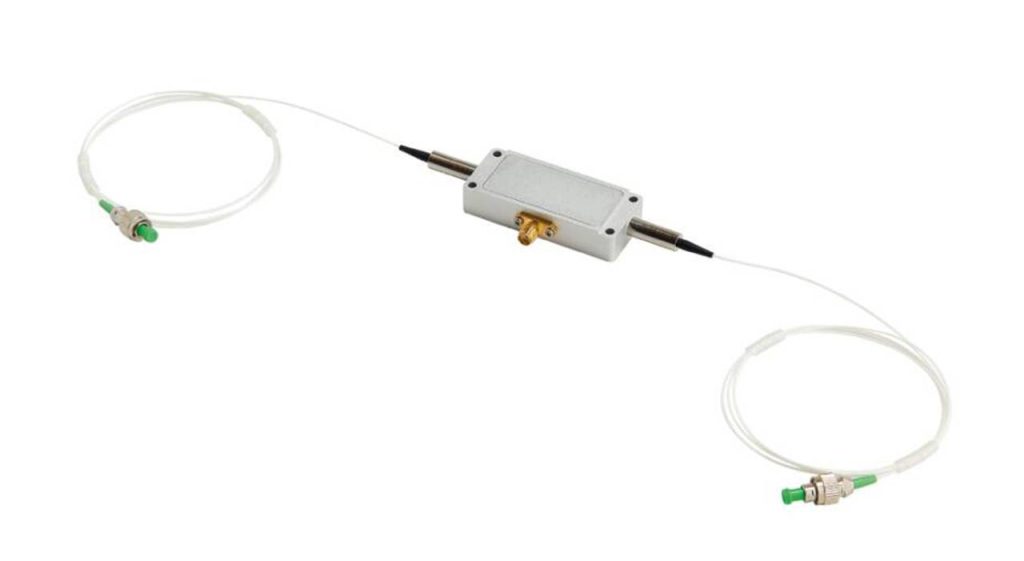
Conclusion
Fiber-coupled acousto-optic modulators (AOMs) have emerged as an indispensable component in modern optical communication systems. Their unique ability to manipulate light signals with high precision, broad bandwidth, and exceptional reliability make them a versatile tool for a wide range of applications. From long-distance communication and complex optical networks to cutting-edge advancements in quantum communication, AOMs play a critical role in ensuring the smooth operation and continuous evolution of optical communication technologies. As new materials and fabrication techniques emerge, the capabilities of AOMs are poised to further expand, paving the way for even more efficient, reliable, and secure communication infrastructures in the years to come.

